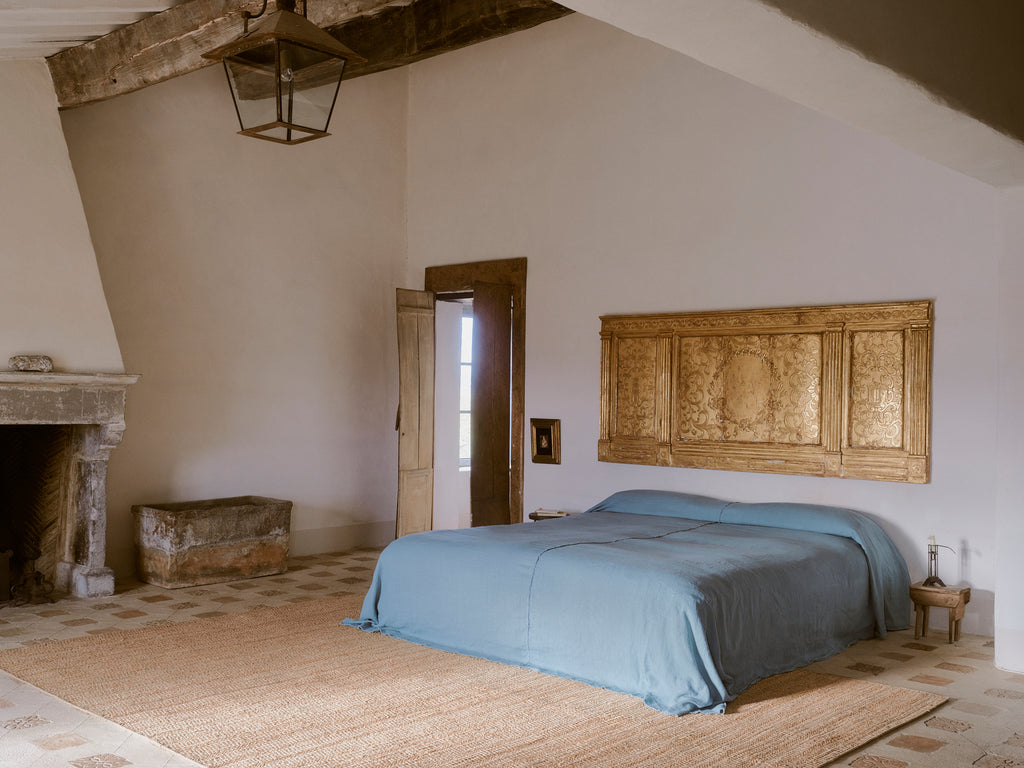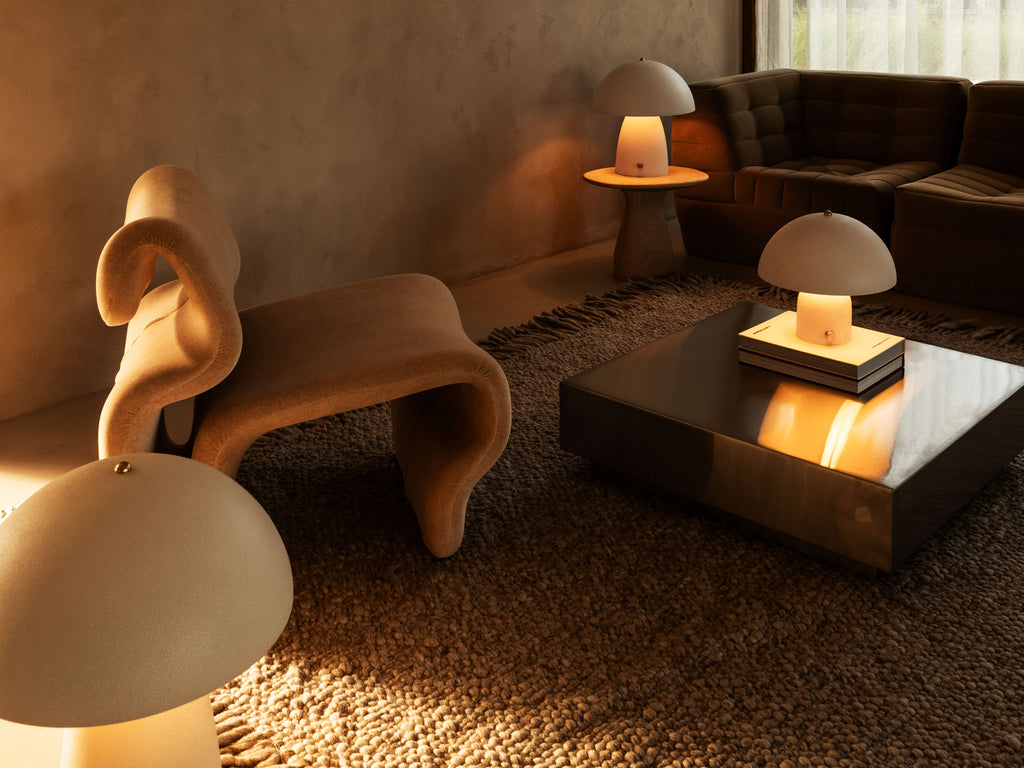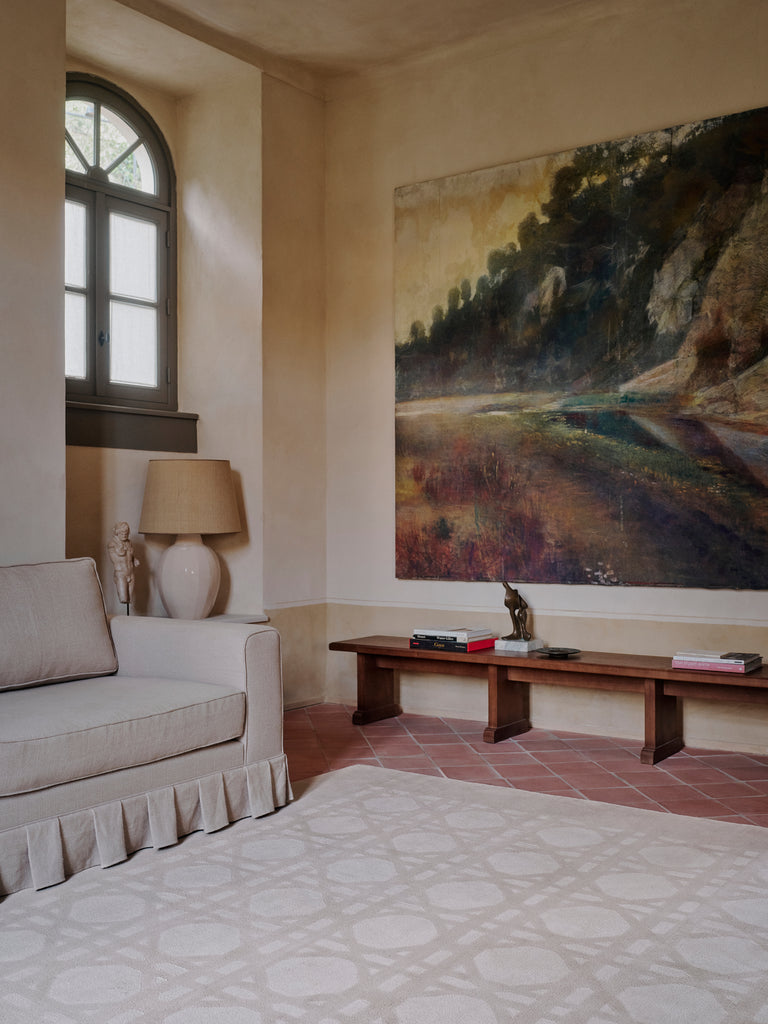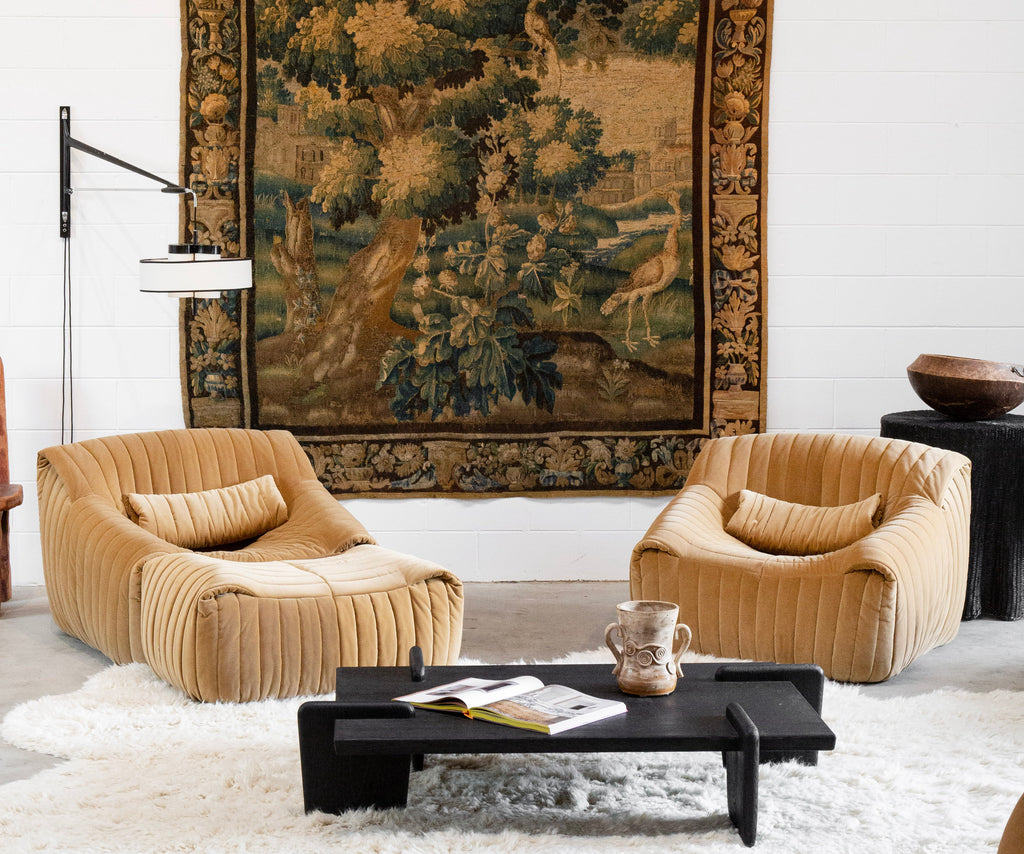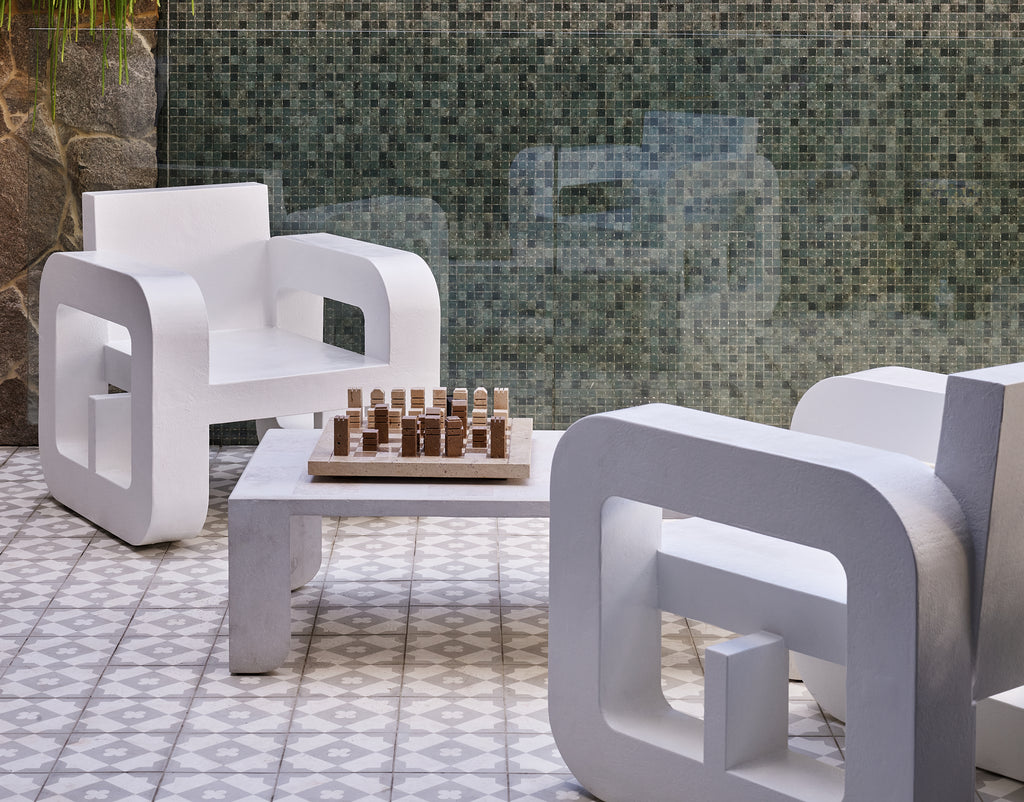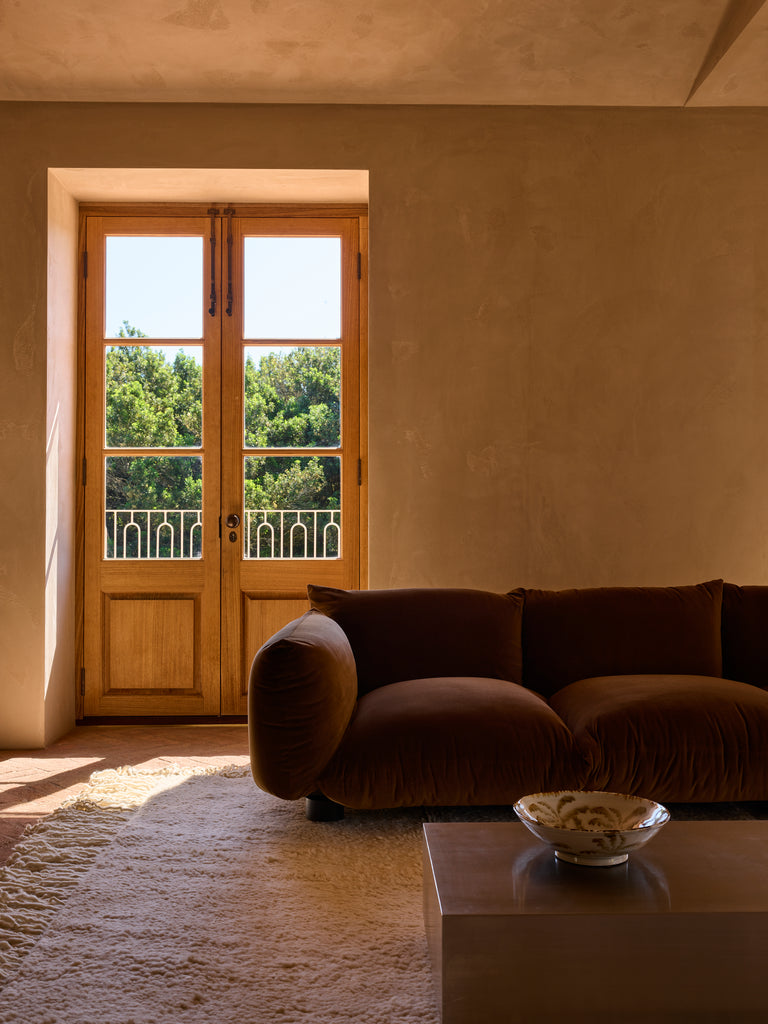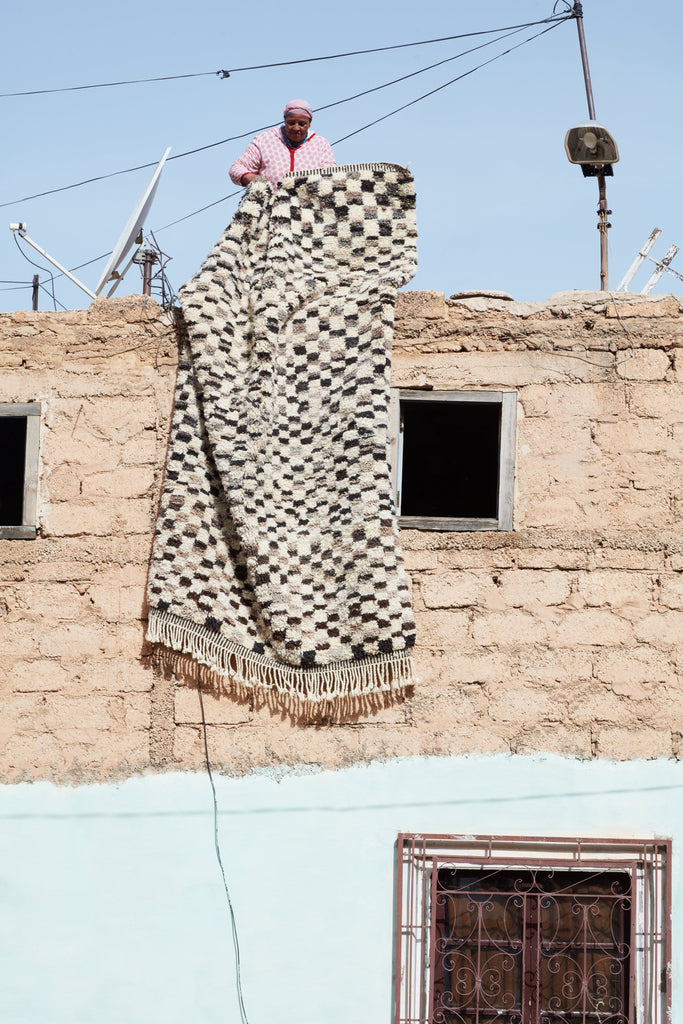
Tête-à-tête
A collaboration with Bloom & Give
Through our work with carpet weavers, we have observed the integral yet complicated role of the female weaver. With sensitivity it has always been our wish to keep these traditions alive for future generations, whilst providing education and income for women so they are empowered in their roles as custodians of these ancient techniques. In the developing world, education is the best way for women to escape the vicious cycle of gender disparity and educated girls are fundamental to erasing global poverty.
We stumbled across Bloom & Give and were inspired by their work in not only keeping these traditions alive, but also giving back a meaningful contribution to the weavers and their families by supporting the education of women.
Dx
Passing a Bloom & Give towel through your hands, there is beauty in its simplicity, a hidden architecture that has a rich history woven in the loom. Bloom & Give is a story of two friends who discovered beautiful artisan made textiles on a journey through India. Learning about the traditional methods in which these fine textiles were being produced, they were inspired to share them with a greater audience. Although, as they unravelled the tapestry within these communities, they discovered that alike the artisanal skill that had been passed from generation to generation, so had a misogynistic point of view and an obvious gender disparity.
Bloom & Give was their opportunity to do something impactful for these women and communities, by setting up an initiative that helps to educate girls and also brings financial aid to their villages by giving them the platform to sell their products all the way from Rajasthan to the rest of the world. Working recently with us on a Tigmi x Bloom & Give towel collaboration, we spoke to Madhu from Bloom & Give about the journey so far, and their ambitions for the future.
How did Bloom & Give begin and what was your intention behind it creating it?
A few years back, we (Madhu & Partha – founders) were visiting India, helping a friend source handmade scarves for her online store. During our trip, we ended up visiting many artisan co- operatives and were completely awestruck by the skill and precision that went into the making of these textiles. We saw factories that operated with no electricity, cotton yarn slowly and laboriously spun on a wooden wheel, gorgeous silk tassels being assembled one at a time by hand, cashmere throws being dipped in vats of natural dye, mixed with uncanny precision, a group of women sitting outside their homes doing 8-foot long running stitches on a quilt by hand. These highly specialized techniques of weaving, dyeing and sewing had been passed down, literally unchanged, through hundreds of generations. We instantly felt that if we could pair what we were seeing with contemporary design, we could create beautiful products with a rich story that would appeal to the modern woman. The timing of the inspiration was perfect - at the time of this trip, we were both on a break from our careers in the tech industry and had committed to doing something more impactful and fulfilling in the second half of our careers.
While spending time in the villages, we also couldn’t help but notice the massive gender disparity and inequity. In rural Rajasthan, one of the States of India with some of the richest traditions of art & craft, 50% of the girls marry before the age of 18. It was very jarring for us to see 13-year old brides, and 18-year old moms in these villages. Between us, we have 3 daughters – 10, 14 and 19 years old, which made this even harder to process. It seemed that along with the beautiful skills of textile making, truly horrendous and misogynistic beliefs about the role of girls and women had also been faithfully passed down hundreds of generations! We then discovered that education is the only effective way for a girl to escape this endless rut of childhood marriage, pre-teen pregnancy and abuse. When a girl goes to school, she earns more money, has healthier children, and reinvests more in her family - this is according to every credible source that’s ever researched the subject of gender disparity in the third world. We also witnessed this first hand that in many villages where intervention programs had improved enrolment women were playing a strong leadership role in the community, often running the co-ops and seemed ‘equal in stature’ to the men around them. One of the lasting impressions of the trip was a meeting with Ms. Maya Saini, an English teacher in a girl’s middle school outside the city of Ajmer. The day we met her a group of her former students who were now in high school were visiting her – apparently a role model for these kids and the main reason why they were still in school. Interacting with that confident dynamic group of girls, hearing about what each one wanted to do with her lift, was one of the most uplifting moments of our lives. We were confident that we could make an impact here by funding the right programs and backing people like Maya (our first give-back project was in her school). That’s when we decided to adopt a socially conscious model and integrated the give-back into our business model.
__________





The traditional techniques of the artisans are passed from one generation to the next, when does this education usually begin and what is being done to help preserve these teachings for the next generation?
One of the reasons Bloom & Give has such a strong focus on hand loomed textiles is the fact that in many regions of India, weaving is traditionally an activity performed by women. The cotton fabric for the Tigmi x B&G blankets is first hand-spun from cotton yarn and then hand-dyed and finally, hand-loomed in traditional wooden looms in Kannur, Kerala, which is one such region where weavers are mostly women. Kerala is the most literate state in India and has been a pioneer of women’s rights in the country. In the past we’ve also worked with women weavers in Kashmir and Bengal.
Women weavers typically learn the craft at a young age from their mothers – in fact, many of the co-ops are run by women. This 500-year old heritage is especially relevant today because the entire process from raw cotton to textile requires no electricity. The socially conscious international customer has been critical to the survival of this 500-year old tradition as it faces a severe domestic threat from cheaper mechanized cotton and polyester apparel. In recognition of the role handloom weavers play in India’s export economy, the central Government of India and local State governments have numerous initiatives to ensure that this industry flourishes.
__________



What has been the most rewarding part of this journey for you?
On the one hand, we get to work with the most talented and hard-working artists on the planet, and to re-interpret textile traditions as old as the human civilization itself. On the other hand, through our mission of educating girls, we get to be a small part of possibly THE social revolution of our times - eliminating gender discrimination. In the process, we get to rub shoulders with the most selfless and creative social workers and meet incredibly smart and courageous girls who fight tall odds just to stay in school. We believe we have the best gig in the world!
Education is a fundamental right for every girl - no matter where in the world she lives.
What does the future hold for Bloom & Give?
2020 has been a challenging year for the whole world! India continues to grapple with the pandemic, and almost certainly, by the end of this year, it will lead the world in both fatalities and jobs lost. While no one in the country has gone unaffected, the disadvantaged and marginalized "below the poverty line" demographic - the communities that our artisans and the girls we support live in - have been simply devastated by this perfect storm. While we are cautiously optimistic about 2021 bringing back some normalcy to our business, we are convinced, now more than ever, of the importance of educating the girl child - so that she may be better prepared for the world that lies ahead. Our long term goal is to eventually morph into a 100% non-profit foundation so we may focus more time and energy on our mission.


__________
Tigmi Trading x Bloom & Give collection is now available, with 10% of profits of sale being donated to support the 'She Belongs in School' initiative.
Learn more about this Bloom & Give initiative and the positive changes it has created for these young girls and women HERE


